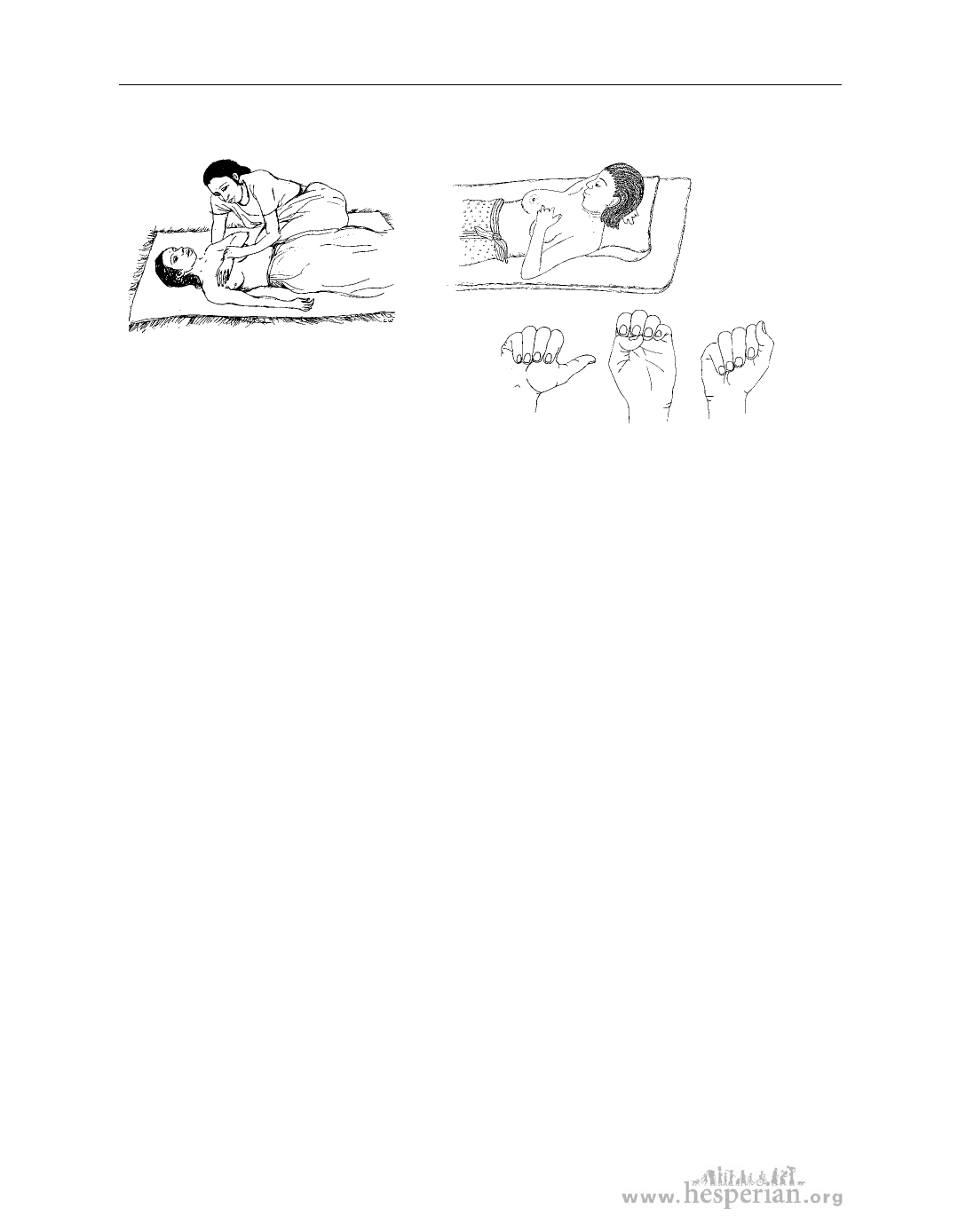
130 chapter 6: Health exams
Other ways you can examine your breasts
If you cannot reach
across your chest,
you can use the
hand that is closest
to the breast.
If you have weak muscles or your hands shake,
you can use your other hand to guide your
fingers. Or someone else can guide your hand.
A helper can hold your hand up to your breast
and keep your fingers in the right place.
Remember: If you get tired, take a break.
You do not have to do the exam all at once.
If you cannot feel well with your fingers, you can
use another part of the hand. You can use your
thumb, your palm, or the back of your fingers.
Be sure to feel all parts of your breast.
The pelvic exam
A pelvic exam can help you know if:
• you have any lumps, swelling, or sores, around your genitals. Some of these
could be dangerous and may need treatment.
• you are pregnant.
• you have an infection in your womb, tubes, ovaries or vagina.
Untreated infections are dangerous.
• you have cancer of the cervix, ovaries, or womb.
• you have other problems in the womb or the ovaries, such as fibroid tumors,
endometriosis, or cysts that are not caused by cancer (see pages 81 to 82).
If you limp when you walk, or use a cane, crutch, or a wheelchair
If you have difficulty moving your body, you will know best how to move from one
position to another. Ask your friend or the health worker to help. Before the pelvic
exam begins, make sure you are well-balanced and feel safe and comfortable. (See
pages 133 and 134 for some ideas.)
Before the exam, try to pass as much urine and stool as you can. The pelvic
exam can easily make the muscles relax and cause urine and stool to come out. If
you wear a catheter all the time, you do not need to remove it. It will not affect the
exam. If you have a urine bag tied to your leg, remove it and place it either beside
you or across your belly. Make sure the tube does not bend, and that it continues to
drain properly.
A Health Handbook for Women with Disabilities 2007